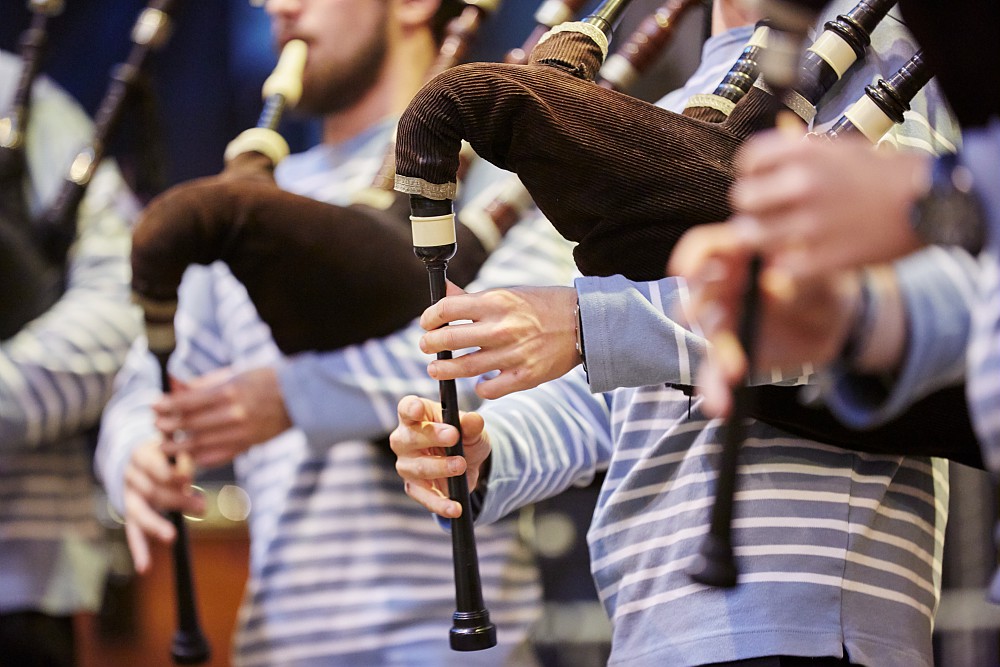
A traditional language, special symbols, their own festivals: the Bretons proudly look back on cultural traditions that set them apart from the rest of France. Music is an important and popular expression of Breton culture. The region’s own unique Breton songs are played at festivals, markets and on regional radio stations. What distinguishes Breton music from French chansons becomes clear after the first few bars.
The Celtic roots cannot be ignored. In many arrangements of typical traditional tunes, instruments are used that are truly unique: the Breton bombarde, the traditional “binioù” (a kind of bagpipe), harps, shawms and violins. Mostly the performers intonate old folk songs, many using the Breton language.
La Bretonelle has put together a selection that perfectly reflects the energetic nature of music from Brittany. The soundtrack for a holiday in Brittany?
Nolwenn Leroy: La jument de Michao
There is no getting around Nolwen Leroy when it comes to music from Brittany. The chanson “La jument de Michao” comes from her hit album “Bretonne”. On it she shows an impressive range: Breton folk songs, pop songs, folk songs and spiritual songs she sings in English, French, Breton and Gaelic.
Alan Stivell: Son Ar Chistr
Alan Stivell is the grand seigneur of traditional Breton chanson. The performer grew up in Morbihan and earned great merits for the preservation of the Celtic-Breton song heritage. The melody of “Son ar chistr” should be familiar to everyone. The “Song of the Cider” was written in 1929 and has since been taken up by Alan Stivell and bands of almost every stripe.
Alain Stivell: Tri Martolod
Alain Stivell again: With “Tri Martolod”, the bard intones one of the best-known folk songs of Brittany. At first, the “chanson du patrimoine” revolves around three young sailors. The protagonists leave their home and let themselves be carried by the winds of the sea to the shores of the New World. In the second part of the song, one of the sailors tells how he meets a young woman on land to whom he is engaged and how they want to build a life for themselves despite their poverty.
Gérard Delahaye: Farine de froment, farine de ble noir
The songwriter Gérard Delahaye’s “Farine de froment, farine de ble noir” is also about happiness on the other side of the Atlantic. In this children’s song, three Bigoudéne – Breton women with the traditional spire cap – find themselves in New York. In the Big Apple, the three open a crêperie. The success of the Breton specialities is overwhelming; New Yorkers queue up and even leave their beloved hamburgers behind for the delicious crêpes. “Farine de froment, farine de ble noir” is a fantastic song by the humorous performer from Morlaix.
Tri Yann: Dans les prisons de Nantes
“Tri Yann an Naoned”, or “Tri Yann” for short, have been among the best-known representatives of Breton folk music since their foundation in the early 1970s. The “Three Yanns from Nantes” live the Celtic culture not only in their songs: The logo shows a Celtic symbol and the musicians always wear traditional clothing at their performances.
Les Marins d’Iroise: Santiano
“Les Marins d’Iroise” are a men’s choir from Brest. The sailors have the classic sea shanties in their repertoire, but in some pieces they also combine Celtic sounds into the songs. “Santiano” is the name of the shanty they perform here. Of course, in true style in sailor shirts and on a boat.
Anton Valéry: La Paimpolaise
The sailor song originated in Paris at the end of the 19th century, and “La Paimpolaise” became very popular in the 1920s. The lyrics are a hymn to the town of Paimpol. A sailor on a great voyage looks forward to returning to his native Breton shores with the majestic cliffs and the magnificent church of Paimpol. The chanson is sung here by Anton Valéry.
Luc Arbogast: Vox Clamantis
Luc Arbogast comes from the medieval scene and uses many Celtic and Breton elements in his songs. Luc Arbogast, who is popular in France, also wrote the musical theme for the series “Game of Thrones”. The video linked here for the song “Vox Clamantis” from the album “Oreflam” was made in the Monts d’Arée and in Huelgoat.
Comité Régional du Tourisme de Bretagne | © Donatienne Guilleaudeau
